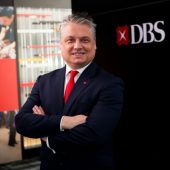6 Timeless Leadership Principles Updated for Today’s Head Honchos

Any athlete who transitioned from amateur to professional status (in soccer, basketball, and so forth) notes that the major difference is the pace and speed of play. Likewise, the pace of business change has increased dramatically in recent years. If we were to bring back a business leader from the 1980s or 1990s, he would be surprised by the velocity and intensity of change in globalisation, technological advances, information ubiquity, customer expectations, employee demographics, and so forth. Businesses that anticipate and respond to these changes thrive. Those that do not die. Since 1955, some 87% of the Fortune 500 companies have disappeared and the average life expectancy of Fortune 500 firms have decreased from 50 years on average, to less than 14 years – and continues to decrease. Each decade, an increasing percent of the Fortune 500 are being merged, acquired, or made bankrupt. These are indeed changing times.
In the last 100 years in business, everyone recognises the centrality of leaders. Leaders instill confidence to employees, customers, and investors. Leaders make informed choices that help or hinder business success. Leaders matter.
So what should leaders do in this Volatile, Uncertain, Complex, and Ambiguous (VUCA) business world?
 To answer this question, we suggest six fundamental leadership principles that need to be adapted to current VUCA business conditions. These six leadership principles synthesise our studies of leadership and our experience coaching and developing leaders. These six principles are timeless. Leaders from previous decades and centuries would recognise the principles, but the application of these principles in this VUCA setting require new skills to be an effective leader in today’s world.
To answer this question, we suggest six fundamental leadership principles that need to be adapted to current VUCA business conditions. These six leadership principles synthesise our studies of leadership and our experience coaching and developing leaders. These six principles are timeless. Leaders from previous decades and centuries would recognise the principles, but the application of these principles in this VUCA setting require new skills to be an effective leader in today’s world.
Principle 1: Be a strategist who can shape the future
Leaders who are strategists think about what’s next, even beyond what customers today know and want. In VUCA worlds, leaders as strategists seek more market influence than market share. To influence markets, leaders need to know and anticipate external contexts (e.g., social, technological, economic, political, and demographic global trends). They also need to know and anticipate customer expectations by co-creating with customers rather than listening or responding to them. When leaders know and anticipate contexts and stakeholders, they build a cross-cultural and global mindset where they are more open to flexibility and change. They are also able to focus strategies so they can make key strategic choices and allocate resources against those choices.
An Asian Consumer Electronics firm managed the global versus local trade off by shifting design of all leadership development solutions from headquarters to having multi-cultural teams from different regions responsible for future programs to better suit the needs of a local audiences. At the same time the firm also instituted a “One Global Passport” philosophy stating that leadership competencies and values, technical competence and English language skills would define people’s potential, irrespective of nationality.
Principle 2: Be an executor who can get things done
Strategy without execution is fantasy. Execution without strategy is misguided. Leaders who are executors in VUCA worlds change and adapt quickly, face and boldly make decisions, and increase transparency.
These leaders learn to collaborate with those who are different from them so that they can learn and adapt.
These leaders also have explicit and timely accountability where they hold themselves and others responsible for success and failure. These execution traits are important for a VUCA world where agility is as important as aspiration, where action counts more than vision, and where processes are as valued as protocols.
Many Asian leaders are admired for their world-class ability to execute. But, the challenge of sustained execution is to shift from execution through coercive or paternalistic leaders who control the execution to shared leadership where employees execute because of shared commitment. A traditional Asian conglomerate gained increases in productivity of 7% and accelerated innovation and globalisation by making social collaboration tools available. These social collaboration tools enable execution by sharing information that shapes action without coercion. In less than one year over 30,000 employees were leveraging these tools to change the way they worked and collaborated without any official orders to do so.
Principle 3: Be a talent manager who can engage today’s talent
In study after study, leaders have to leverage themselves through the talent they guide. As suggested, the traditional leadership models from the top down are about command and control, where leaders set direction and others act on it. In a VUCA world, leaders have to coach, communicate, and collaborate so that employees are connected to the business goals because of the leader, but not through the leader. These leaders shift from management by objectives to management by shared mindset. When leaders manage talent, they increase productivity through three processes: competence, commitment, and contribution. By building competence, leaders identify future technical and social skills to succeed. By ensuring commitment, leaders create an employee value proposition that captures employee engagement. By generating contribution, leaders help employees find meaning and purpose from their work. When competence, commitment, and contribution are managed well, productivity follows, multiple generations of employees work together, and talent is embedded throughout the organisation.
Asian leaders have to continue to think about future competencies, to find ways to engage employees, and to retain the best employees by helping employees find personal purpose from their work. In our book The Why of Work, we summarise seven principles for leaders to become meaning makers.
Principle 4: Be a human capital developer who can build next-generation talent
 Ultimately, the best leaders replace themselves with future leaders not like themselves. Like good parents who invest in helping their children become who their children hope to become, not who the parents want them to become. The knack of workforce planning for the future requires envisioning a future workforce different from the present. Brick-and-mortar stores are learning that Internet shopping will require sourcing talent for a future business requirement. Finding future employees among today’s workforce comes from empowering employees to discover which employees can adapt and learn in a new setting. Shaping careers that move horizontally as well as vertically and that measure success by influence more than position becomes relevant as well.
Ultimately, the best leaders replace themselves with future leaders not like themselves. Like good parents who invest in helping their children become who their children hope to become, not who the parents want them to become. The knack of workforce planning for the future requires envisioning a future workforce different from the present. Brick-and-mortar stores are learning that Internet shopping will require sourcing talent for a future business requirement. Finding future employees among today’s workforce comes from empowering employees to discover which employees can adapt and learn in a new setting. Shaping careers that move horizontally as well as vertically and that measure success by influence more than position becomes relevant as well.Wise leaders say that ‘leaders are judged by what they leave behind.’ In other words how well the organisation survives and thrives once the inspirational leader leaves. Is the next generation of leaders in place? Have they been developed, challenged, stretched and empowered? Many Asian private-owned enterprises face these succession challenges as great individual leaders must establish thoughtful leadership.
Principle 5: Be personally proficient to invest in yourself and to build your personal authenticity
Leadership oracles wisely state that all change has to be personal change, that leading others has to start with leading oneself, and that leaders must be the change they hope to see in others. Terms like emotional intelligence, people quotient, or self-awareness highlight the focus on leaders who know themselves so that they can lead others. We have summarised these personal insights into five areas, which we consider the Olympics of leadership:
- Be intellectually curious and learning agile
- Be emotionally grounded and self-aware
- Be socially conscious and connected
- Be physically fit and energised
- Be values based with a strong moral code
Leaders who demonstrate these five personal attributes will be personally proficient and able to respond to VUCA business conditions. They will not be overcome by the demands of change, but relish the opportunities in change.
MB Shin, the previous CEO of LG Electronics India, was greatly admired by his local team, promoted a number of Indians into positions of authority, was voted “Electronics Industry Man of the Year” and was loved by spouses and kids of the employees for the Summer Camp he personally and enthusiastically sponsored every year. He represented what he wanted others to become.
[bctt tweet=”6 evergreen leadership principles to help you flourish in today’s #VUCA business environment” username=”ATCevent”]
Principle 6: Develop a personal brand that represents the firm’s brand
Ultimately, the test of a leader inside a company is the extent to which his or her personal behaviours create value for those outside the company. We call this having a Leadership Brand. It begins by leaders understanding firm brand or identity in the marketplace, or what your organisation is known for by those who use the services. When those external expectations translate to leadership actions, the leader’s personal brand reflects the goals of the organisation.
At CapitaLand, leaders inside the company are working to ensure that their actions are consistent with customer expectations. They have programmes within CLIMB (CapitaLand Institute of Management & Business) that focus on “building people” to be better leaders and contributors in a way that is consistent with their main business of real estate and hospitality. The Institute Leader, Lee Tiong Peng is also a leader who “lives the brand” with an open leadership philosophy and gently coaches his staff and encourages collaboration and sharing within the global CapitaLand Learning team.
Conclusion
Developing excellence in these six areas above as well as increasing your cross-cultural competence, global mindset, and leveraging social media as a key enabler, will help you empower your employees, grow your business and win in a more sustainable manner, no matter how volatile, uncertain, complex or ambiguous the environment.
Our leadership time traveller would recognise the six basic principles of effective leadership, but would also realise that their application would have to be dramatically different to adapt to VUCA business conditions. By adapting these principles, leaders can shift from amateurs who are overwhelmed with the pace of business to professionals who anticipate, respond, and succeed.
Images: Shutterstock
This article was first published in Storm Magazine in Q4 2012 and appeared on LinkedIn Pulse on July 30th, 2015.
Related articles
Leave a Reply
Sign up to our newsletter
Get a weekly digest on the latest in Talent Acquisition.
Deliver this goodness to my inbox!




